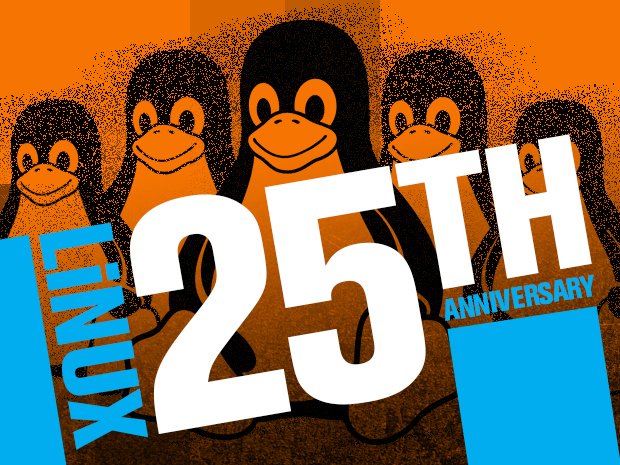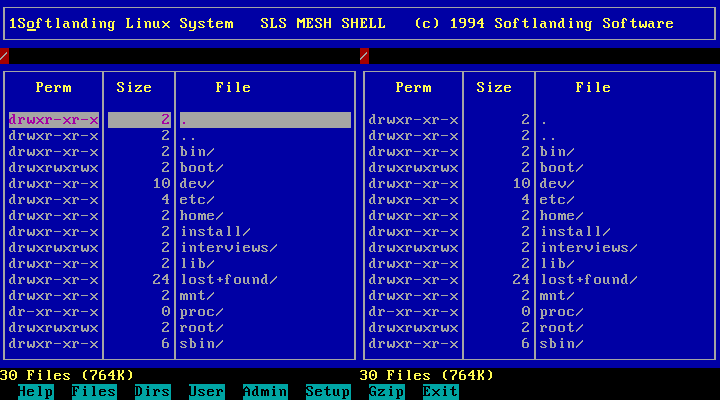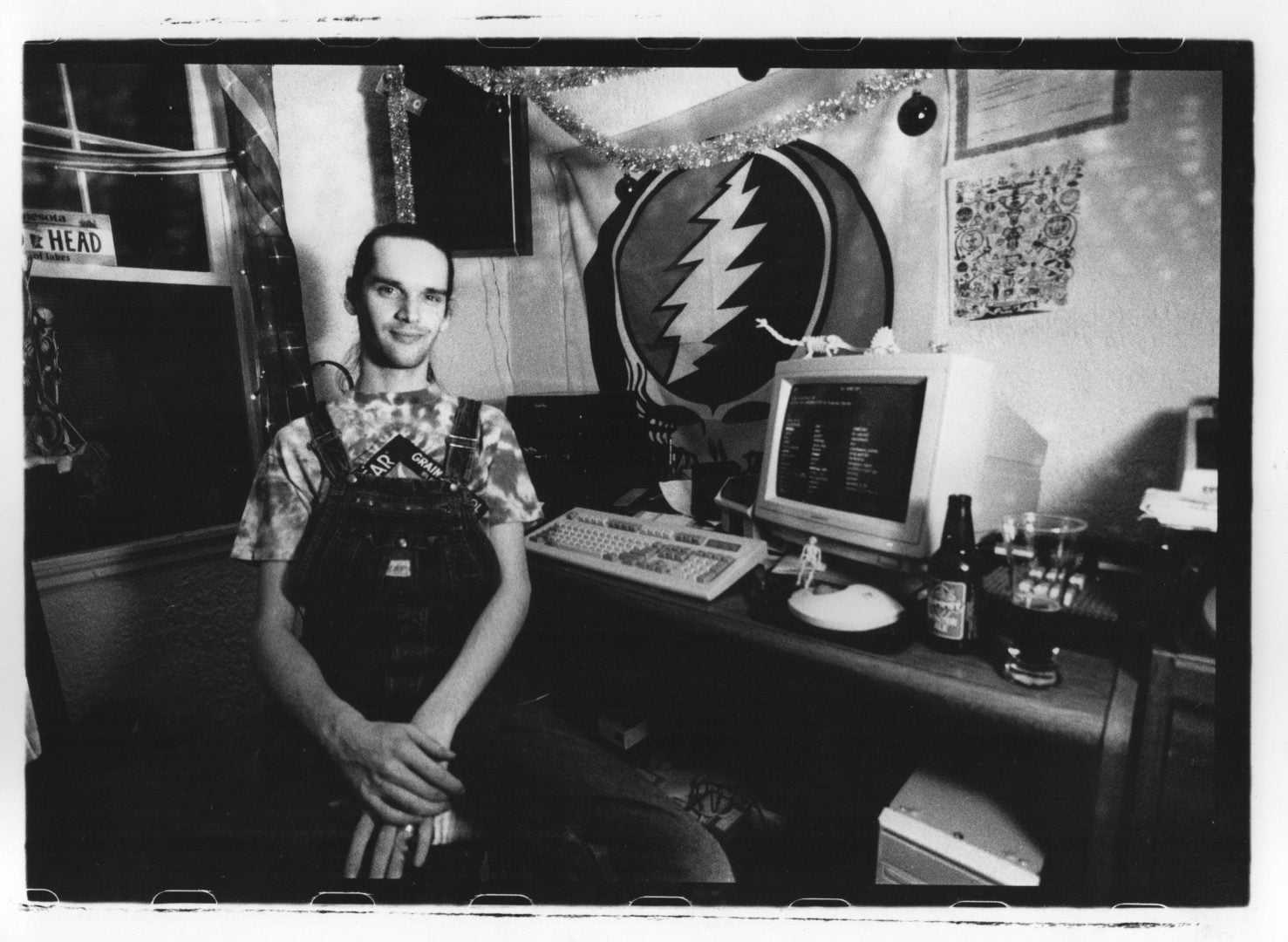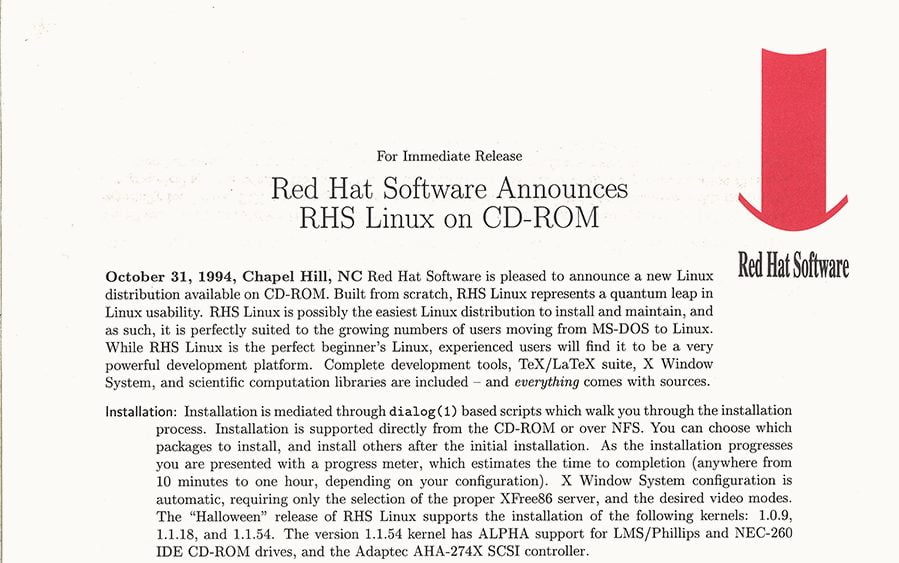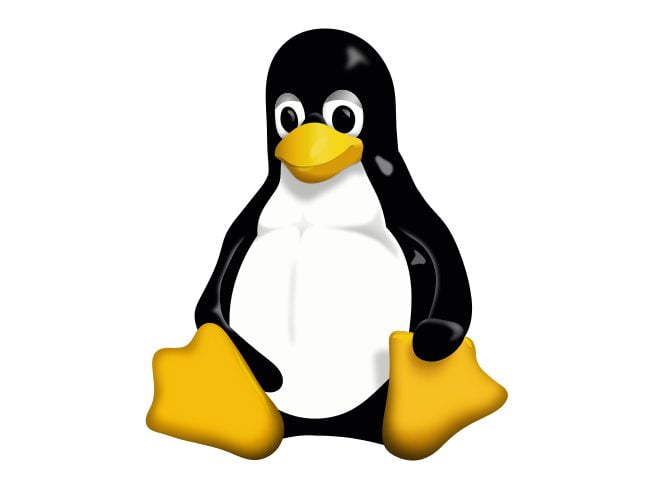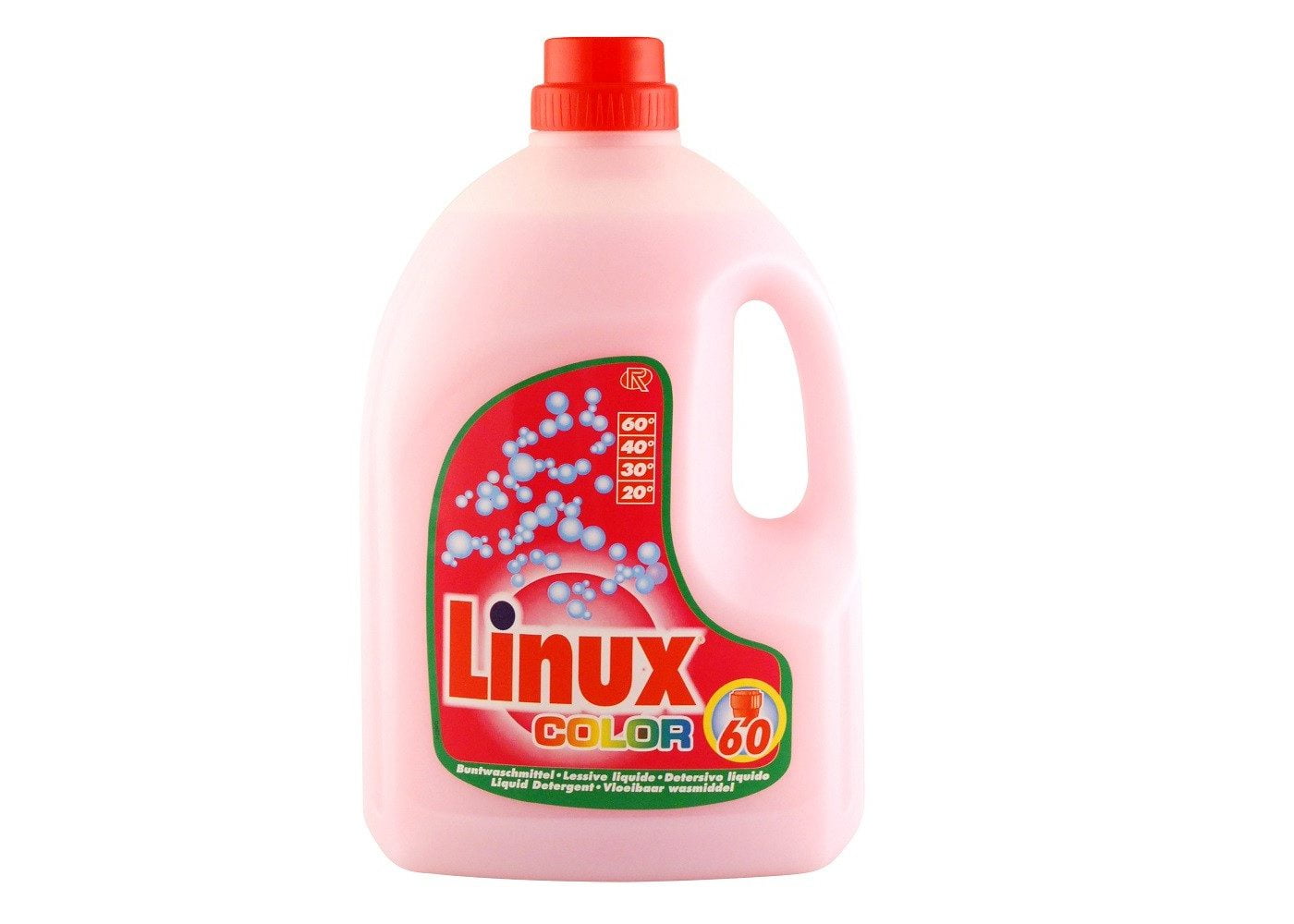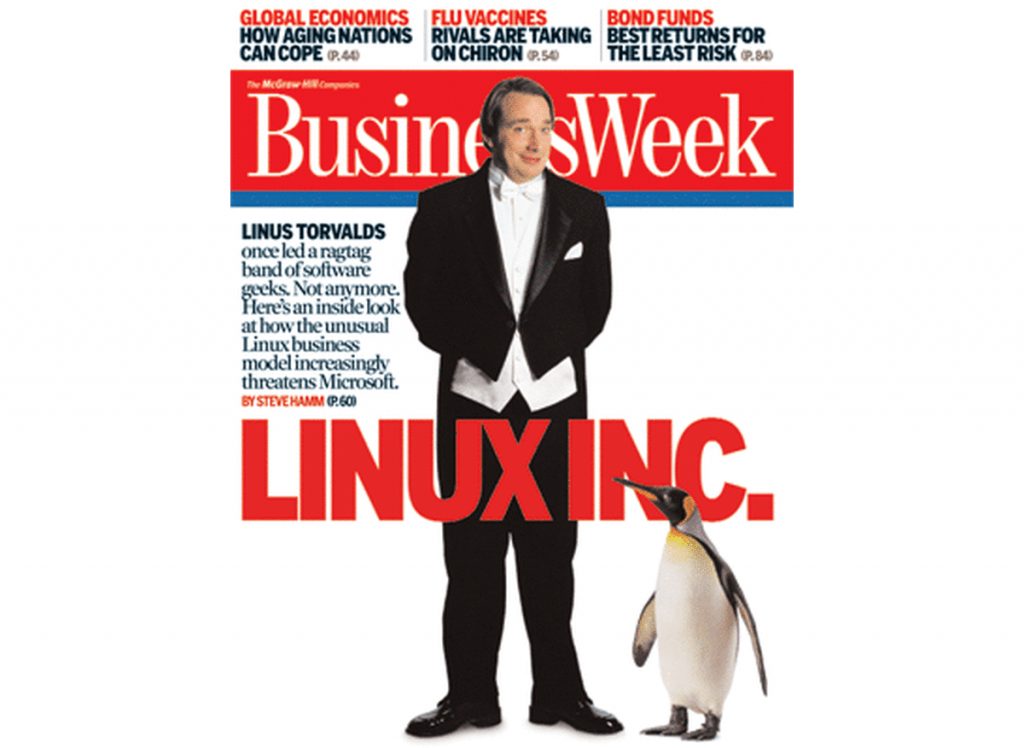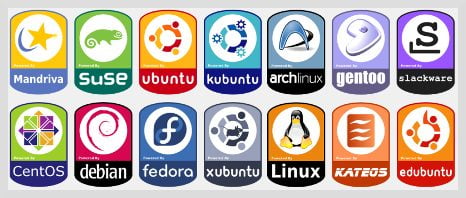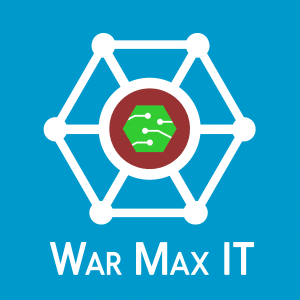A momentous milestone
Aug. 25 marks the 25th anniversary of Linux, the free and open source operating system that’s used around the globe in smartphones, tablets, desktop PCs, servers, supercomputers, and more. Though its beginnings were humble, Linux has become the world’s largest and most pervasive open source software project in history. How did it get here? Read on for a look at some of the notable events along the way.

A twinkle in his eye
It all began when 20-year-old Linus Torvalds, pictured here in a photo from the early 1990s, was a computer science student at the University of Helsinki in Finland. Having begun his tech adventures at the age of 11 on a Commodore VIC-20, he became interested in the Minix operating system while at the university.
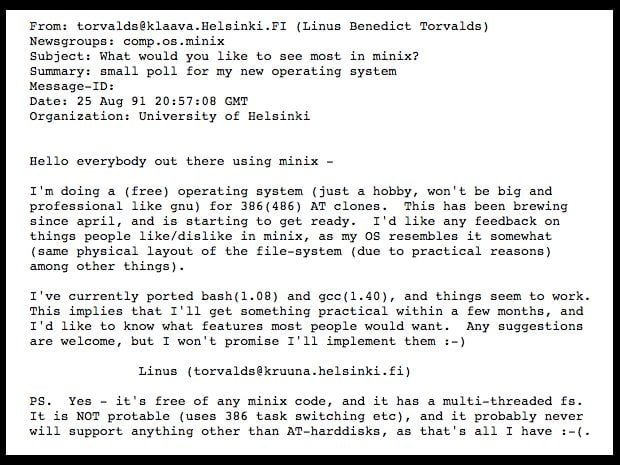
A modest proposal
Torvalds’ interest in Minix was reportedly coupled with frustration over its licensing policies at the time, prompting him to launch an effort to create his own operating system. On that momentous day in August 1991, he crafted what’s now become the legendary email that kicked things off. The resulting discussion can still be viewed today on Google Groups.
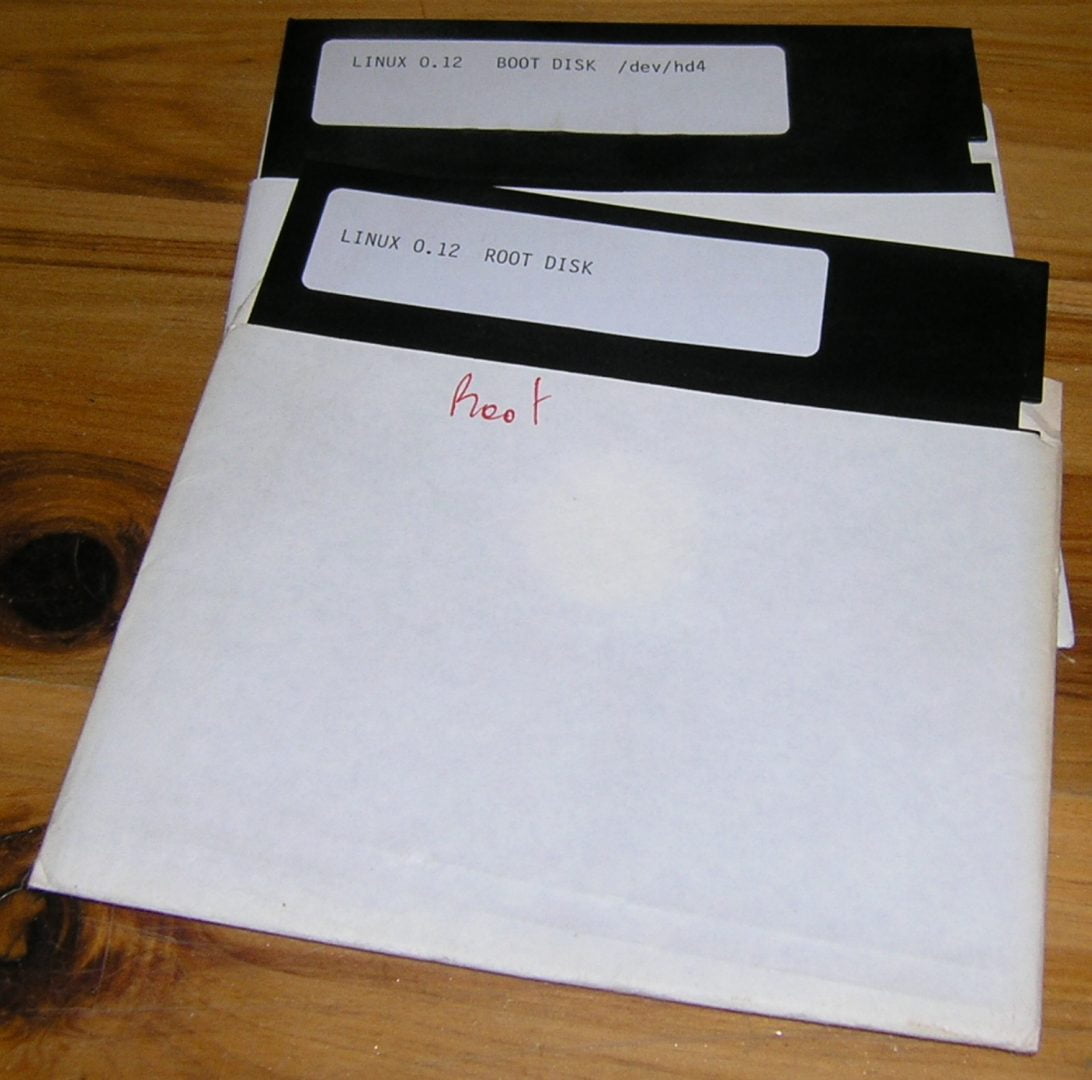
Credit: Wikipedia
The move to GPL
Though Torvalds initially called his OS “Freax,” he ultimately settled on “Linux” instead and even published an audio guide to pronouncing the name. Version 0.01 of the Linux kernel debuted September 1991. When Torvalds released version 0.12 in February 1992, he announced a switch to the GNU General Public License (GPL). It wasn’t until March 1994 that Linux 1.0 appeared, comprising 176,250 lines of code.
The first major distro?
It may not have been the very first Linux distribution, but Softlanding Linux System was founded in May 1992 with the slogan, “Gentle Touchdowns for DOS Bailouts,” and was arguably the first to be widely used. Today SLS is most commonly considered the predecessor to Slackware.
Slackware is born
Slackware was born in 1993, when Patrick Volkerding was a student at Minnesota State University Moorhead and helped a professor install SLS. Today Slackware is the oldest distribution that’s still maintained, and Volkerding is still the person handling that. This photo, kindly provided by Volkerding himself, was taken by a friend back in 1994.
Red Hat arrives
Red Hat is perhaps the best-known name for Linux in the enterprise world today, and its namesake distribution appeared on CD-ROM back in 1994. The company’s hat logo has evolved considerably over the years and derives from Red Hat Linux creator Marc Ewing’s habit of wearing his grandfather’s red Cornell lacrosse cap while a student at Carnegie Mellon University.
A bite makes history
Tux is the universally recognized logo of Linux, but it’s only natural to wonder why a penguin was designated for that task. As Torvalds has reportedly explained it, he developed a case of “penguinitis” when he was nibbled by one during a 1996 visit to the National Zoo & Aquarium in Canberra, Australia.
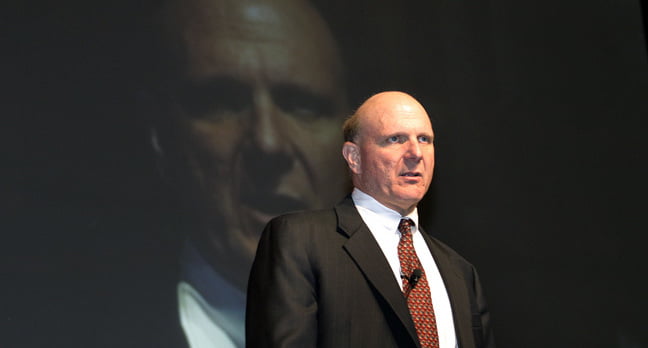
‘Linux is a cancer’
Linux grew steadily in popularity during its early years, and there could have been no better testament to its increasing strength than Microsoft’s growing unease. The most memorable early evidence of that concern was the infamous 2001 comment by then-CEO Steve Ballmer in which he said, “Linux is a cancer that attaches itself in an intellectual property sense to everything it touches.”
What’s in a name?
It might be difficult to confuse software with soap, but in 2001 Swiss company Rösch launched its Linux brand of detergent. The product is still sold today, but Torvalds holds the Linux trademark for “computer operating system software to facilitate computer use and operation.”
IBM’s Super Bowl pitch
It’s not often you see a TV ad for Linux today, but back in 2003 IBM created a big one for a big occasion: the Super Bowl. Spanning a full 90 seconds, the commercial — which can still be viewed on YouTube — ended with the tag line, “The future is open.”
‘Big and professional’
Linus Torvalds may not have planned for his little “hobby” to get all “big and professional,” but sure enough that’s exactly what it did. In 2005 that was plain for all the world to see when Torvalds was featured on the cover of BusinessWeek and in a prominent article describing Linux’s growing business success.
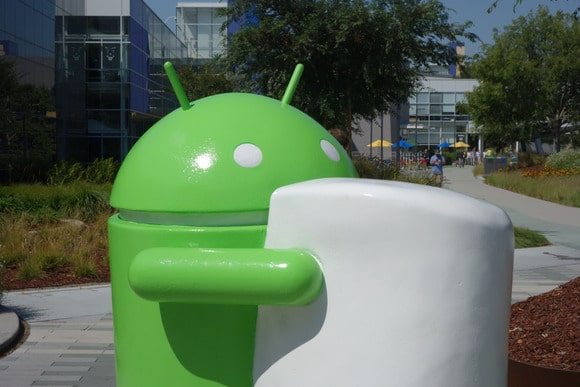
Android marches in
Linux has done enormously well on numerous platforms, but its most mainstream and widespread success has surely come through Android, which is based on the Linux kernel. More than 80 percent of smartphones today run the mobile OS, which made its debut back in 2007 along with the Open Handset Alliance.
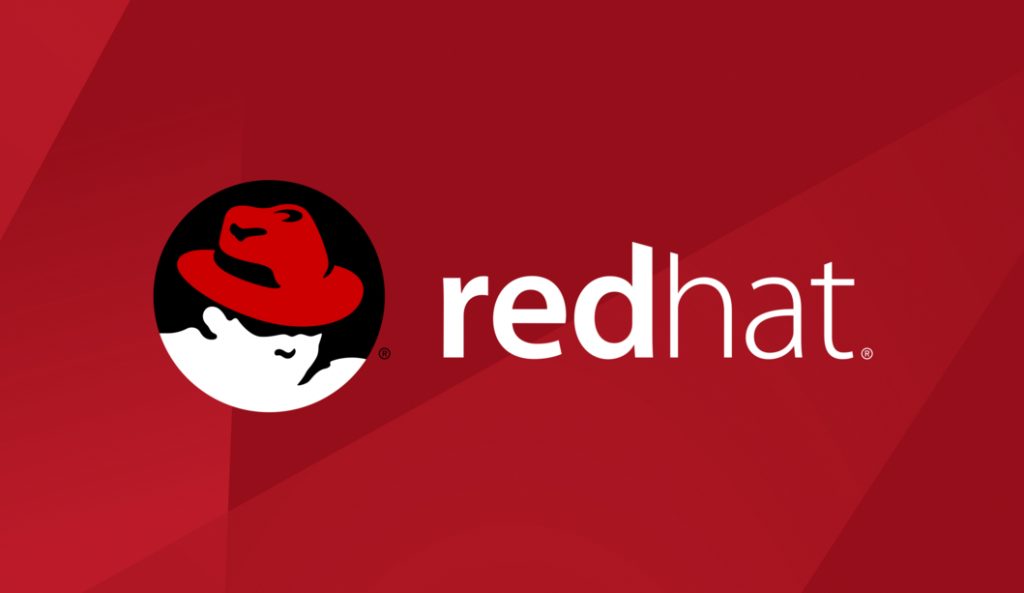
One *billion* dollars
Success can be defined in countless ways, but it’s hard to argue with bottom-line results. In 2012, Red Hat became the first open source company to surpass US$1 billion in revenue. “Red Hat is the first pure-play, open source company, and one of only a select few software companies, to have achieved the billion dollar revenue milestone,” said president and CEO Jim Whitehurst in the announcement. “The open source technologies which we provide are being selected by more customers every day as they re-architect the infrastructure of their data centers for greater efficiency, agility and cloud enablement.
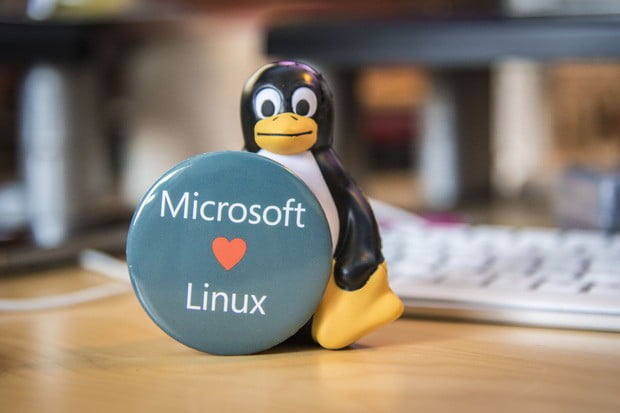
‘Microsoft loves Linux’
What a difference a decade (or so) makes. Back in 2001, Microsoft called Linux a cancer; in 2014, it declared its love. Microsoft CEO Satya Nadella first confessed the company’s newfound passion at an event in October of that year, and the message has been repeated more than once since then. You’ve come a long way, Linux.
A world of choice
Linux and Microsoft may now be pals, but plenty of users out there relish choice, and that’s just what the Linux world provides. Today there are distros to fit every taste and purpose, not to mention every platform. Who says you can’t have *exactly* what you want in computing?
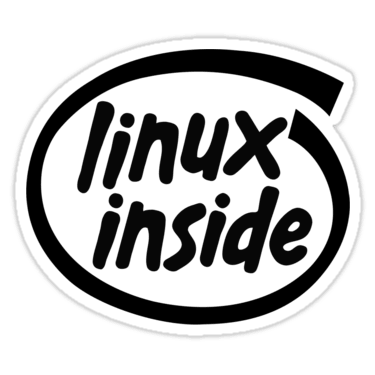
A Linux-powered world
There is no longer any denying that Linux has, in many ways, achieved world domination. On the web, it powers more than 95 percent of the top 1 million domains. Most of the world’s financial markets run it, and so do 98 percent of the top 500 fastest supercomputers. More than 75 percent of cloud-enabled enterprises say it’s their primary cloud platform. And for its next trick? Linux is already being used in space, so it will surely find new challenges to tackle on the final frontier.

